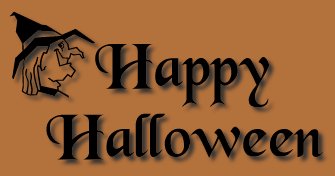 |
| When the Celts occupied Europe, long before the birth of Christ, Halloween was a time for all who lived good lives to feast - similar to Thanksgiving. This All Hallow's Eve was also the night when ghosts and goblins walked the earth. People lit candles and masqueraded in frightening costumes made of animal skins to ward off the spirits of the dead, who returned to earth as wandering cats, witches and ghosts. People in costume began to visit homes, asking for treats - those who gave them would be assured of having a good year; those who did not were warned to watch out for spirits. The Romans, after conquering England and France, introduced their own touches to Halloween. They bobbed for apples and gave nuts to their neighbors. The Italians left bread and water, and lit lamps before going to bed to appease visiting ghosts. Originally, children hauled flaming turnips around on Halloween night. Today, however, pumpkin jack-o'-lanterns frighten the evil spirits away. Halloween lanterns are also known as will-o'-the-wisps, corpse lights, fairy lights, and fox fires. The Celtics that lived in what is now Great Britain and Northern France would carry a lantern when they walked on the eve of October 31. These lanterns were carved out of big turnips and the lights were believed to keep the evil spirits away. Children would carve faces in the turnips. These carved turnips were called "jack-o-lanterns. Legends have it that the "jack-o-lantern" got its name from a stingy and mean old man, named Jack, who when he died was too mean to get into heaven. When Jack went to hell he was meet by the Devil who gave him a piece of burning coal and sent him away. Jack placed the burning coal in a turnip to use as a lantern to light his way. The legends claim that Jack is still walking with the lantern looking for a place to stay. When the early settlers came to America they found the big round orange pumpkin. Being larger and much more colorful than turnips, the pumpkin made great "jack-o-lanterns". Eventually the pumpkin would replace the turnip. As the settlers spread across America they took their Halloween celebrations with them. The custom of the "jack-o-lantern" would travel with them. Eventually the Pumpkin would become the most widely recognized symbol of the Halloween holiday. |
 |
 |
| Ghosts go out On Halloween night. They play tricks on people And give them a fright. They rattle their chains And moan 'till its light. They have so-o-o much fun On Halloween night. |
| When is Halloween? When scary pumpkins glow, And spooky witches fly When ghostly mummies dance, And black cats lurk in the shadows, Children go trick-or-treating While ghosts are haunting houses! Then it's Halloween! |
| Elizabeth J. Holt |







